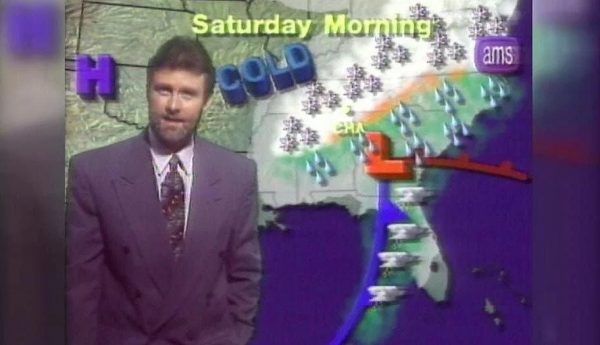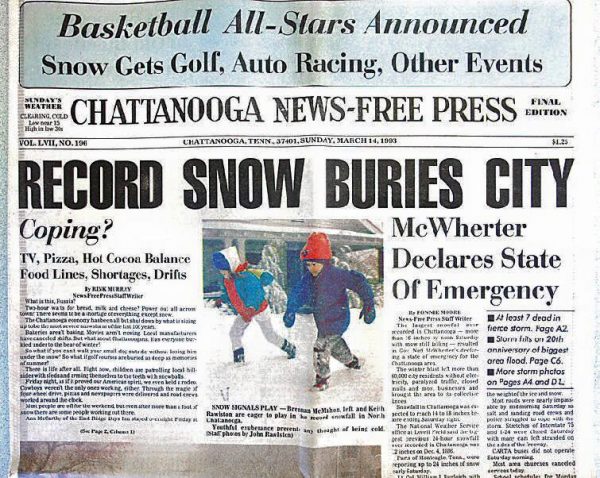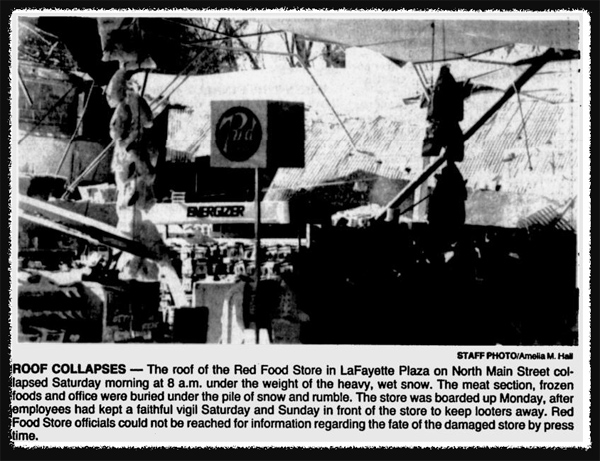03.15
Thirty years ago this week, much of the Eastern US was crippled by a record-breaking snow storm. Here’s a look back at some Walker County photos and memories from the March 1993 “Storm of the Century” a third of a century later.
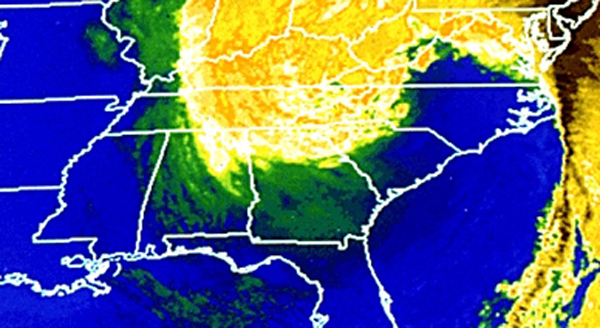
In mid-March 1993 the entire eastern US was hammered by a crippling, late-season winter storm. Communities in 26 states were impacted by the freak weather, and some 310 people were killed nationwide. Travel by highway and air was disrupted for nearly a week, with property damage and economic losses estimated (in 1993 dollars) at $5.5 billion.
Hardest hit were southern states like ours that rarely get more than a few inches of snow a year – much less two-plus feet in a day.
Forecasters became aware of the storm and its potential nearly a week before it hit; Chattanooga TV weathermen warned of a “significant snow” heading into the area five days before it finally struck. But snow in March is rare for this area; March 1993 had until that point been typically warm. Many in the region dismissed weather warnings as being so much hot air.
Forecasts proved true, and in most cases the storm was worse than predicted.
The megastorm sank boats in the Gulf of Mexico, spawned storm surges and tornadoes in Florida, and began dumping snow across Georgia and Alabama from one end to the other. Despite exhibiting hurricane-force winds, the blizzard was never defined as such or named; residents in Florida (where 47 people died) still refer to it as “No Name Storm.”
Around dinner time on Friday March 12th, “No Name Storm” reached North Georgia, where all too many people still weren’t prepared for a snow or the disruptions that would follow.
- “My dad dismissed the forecasts and didn’t believe we would get snow, much less the major snow that came. We had firewood but it was nowhere near the house. Mama listened to weather forecasts and decided it would be a good idea to stack some wood on the back porch, an idea that saved us a lot of work later on. We didn’t think to store any water in buckets or the tub like some did, so water turned into more of a problem than heat after our power went off during the night.” -Anon
During the night of March 12th the storm dumped at least 20 inches of snow in the area, officially measuring 23 inches in Chattanooga, 14 in LaFayette, and 22 in Dalton – but howling winds whipping up to 50 or 60 MPH caused huge drifts that in some cases reached six feet deep.
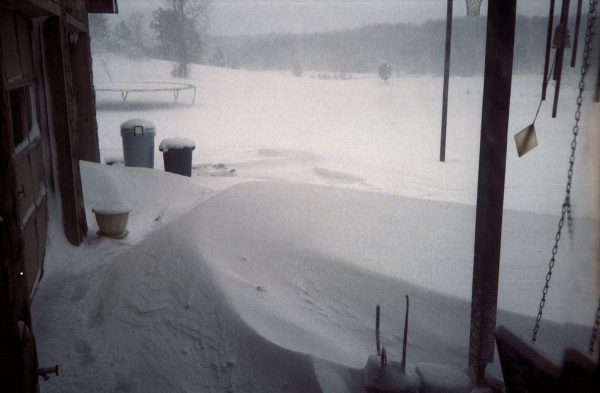
Mid-March temperatures normally in the 50’s or 60’s fell into the teens or in a few places single-digits, with windchill well below zero. But the thing that stands out most in some memories are the thunder and blue or green lightning that preceded and accompanied the storm, a phenomenon weathermen later described as “thundersnow.”
- “I was a senior in high school. We did not have power at my parents for two weeks. I remember when they would call for snow I would stay with my cousins so we could play football and ride four wheelers. Got more than we bargained for. Still have great memories of the blue lightning and spending time with family. It was the most beautiful natural phenomenon I have witnessed.” -Rodney
A group of eight from Linwood driving two Jeeps attempted to camp on Pigeon Mountain on the evening of March 12th but were forced to leave by officials; instead of going home they drove out to the top of Taylor’s Ridge on Smith Gap Road where they continued to party and got stuck after snow began to fall. Two of the trapped men attempted to walk down the ridge seeking help for the other six.
That journey would have been difficult even in good conditions, and only one of the two survived. 28-year-old Travis Asher froze to death halfway down the East side of Taylor’s Ridge.
- “They were two jeeps with 8 guys drinking and four wheeling. They got stuck and two walked off, one froze to death half way down the mountain and the other showed up at my grandparents farm on the back porch black from soot. He had burnt pieces of tire for warmth in the night walking off the Mtn. They landed the helicopters in our field. I was 5 when that happened.” -Zach
Asher was Walker County’s only official storm fatality, but a number of expectant women had miscarriages during the storm due to stress and delayed medical care. Lack of care was certainly not, however, from lack of effort.
Firefighters, deputies, police officers, EMT’s, doctors, dispatchers, and other emergency responders stayed on call all through the storm and (in some cases) several days after the snow stopped falling. Some remained on the job because they were needed, others stayed because they had no way to get home or their scheduled replacements had no way to get in.
- “Working at the county’s new (6 month old) 911 center where I had just been promoted to shift supervisor two weeks before. It was the last night of our four day rotation and I was stranded at work for three more days.” -Mickey
Hospital workers were also stuck on duty for days on end, doing whatever necessary to provide care to existing patients and those injured in the storm. Some found themselves doing their own jobs and the jobs of others when co-workers got stuck in the snow. Walker County residents working at Hutcheson, Hamilton in Dalton, Erlanger in Chattanooga, and other regional hospitals had experiences similar to the one below:
- “I remember. I was living in Chattanooga at the time and working in Athens TN at the hospital. I worked 12 hour shifts and had only been asleep at home a short time when the hospital called and asked me to come in early. So off to Athens I headed. It was a light snow that increased in intensity as I drove further north. At last I reached the hospital(Athens Regional). Everyone else in the dept. went home and I was alone. As the hours passed and the snow got deeper I knew I would not have a relief shift in the morning as promised. I was on the clock for 6 days straight. I was the whole respiratory dept. Towards the end, food was running short for staff and visitors, patients had priority.” -Celeste (now lives in Walker County)
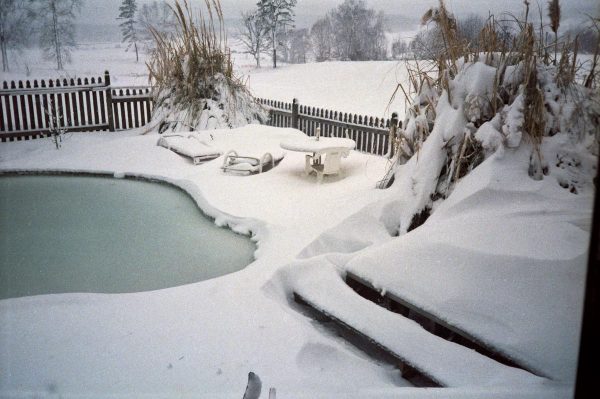
Sixteen to twenty inches of snow isn’t much by the standards of people living in Ohio or Minnesota, but in Georgia that amount was (and still would be) devastating. State, county, and city road crews all over the Southeast were unprepared for the kind of snow and damage seen in March 1993. Homeowners and businesses were similarly unprepared; in some neighborhoods snowed-in families lacked even a decent shovel for clearing driveways or porches, and few had emergency power, backup heat, or extra food.
Buildings and infrastructure not built to withstand heavy snowfall and high winds paid a high price. Utility poles snapped like twigs under the strain of wind, snow, and falling trees. Chattanooga’s Sam’s Club warehouse collapsed, as did several flat-roof carpet mills and the Carpets of Dalton store in Whitfield County.
LaFayette’s Red Food Store collapsed under the weight of snow. That grocery was a total loss, demolished later that year and not reopened until late 1996 (as a Bi-Lo) on the other side of the same shopping center. (Sonic now occupies part of the lot where Red Food once stood. The Bi-Lo became Food City.)
- “my wife and i were still newlyweds living in a small apartment on a dead end street. we did not prepare and thought after a few days we were gonna end our days on earth either starved or froze to death. we had no power, water, phone. very little food and some candles to keep warm .we are wiser now and can survive just about anything. i hope haha” -Gerald
By the evening of March 13th snowfall stopped and the sun came out, but most in the area found themselves stuck at home with blocked driveways, blocked roads or streets, no power – and in some cases no water or telephone service. State-wide over 200,000 people lost power for a while and every state road -including I-75- was temporarily closed by order of Governor Zell Miller.
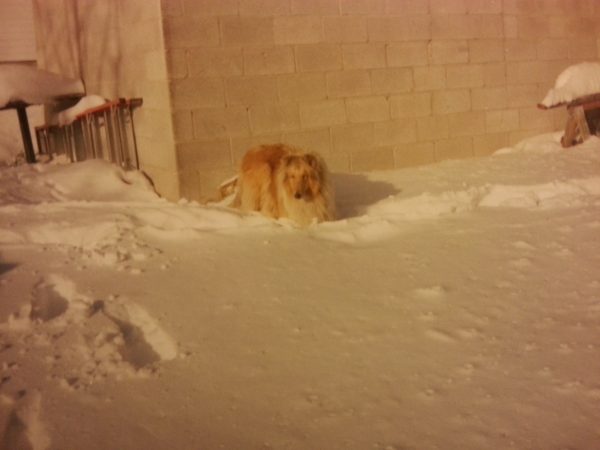
News reports at the time said some 15,000 homes here in Walker County were without electricity over the fateful weekend. It seems unlikely any home in the area stayed on the grid throughout the duration. Phone service held up better than electric but was still sporadic at best.
For many no power meant no heat, and in rural areas no power also meant no water. Power and phone crews were unable to restore service until roads were cleared, which was a problem since Walker County only had six snow-removal vehicles and every bit of equipment the county did have was buried.
The county and its municipalities set up shelters in fire stations and churches that could be accessed, leaving out drums of kerosene in central areas for anyone who could travel well enough to access it. Most densely populated areas of Walker County saw roads cleared on Sunday the 14th, but remote places like Villanow and parts of Lookout Mountain were left on their own a bit longer.
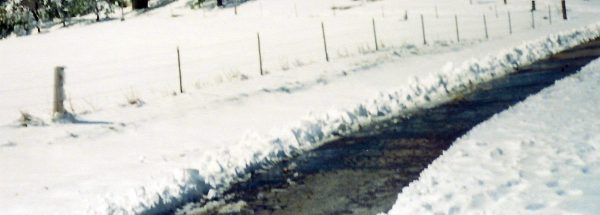
In those rural communities much of the digging out and traveling was done by neighbors and relatives using whatever equipment they could get; barn shovels, horses, farm tractors, and the occasional bulldozer or backhoe.
- “Ahh. I was a senior in high school…at the old Lafayette high school. We didn’t have power for nearly a week…couldn’t get out to get to town. An 18 year old girl…stuck at home with parents and no power. And we didn’t have cell phones back then.” -janice
Those who managed to leave their property had nowhere to go because nothing was open. With no power, customers, or employees, every store was closed and dark. In desperation, some broke in and helped themselves to basic needs like bread and milk. In at least one incident, thieves left enough cash on a gas station counter to pay for stolen product and broken windows. County employees cut gate locks at a Rock Spring hardware store – with owner permission – to give locals access to the store’s propane tanks.
Retailers that managed to open shortly after the storm quickly ran out of whatever basic supplies they still had on hand, with little hope of getting more in a timely manner. Southerners have always experienced some panic issues before a deep snow, but the shortages and store closures experienced three decades ago made the rush for “milk and bread” before snow a permanent fixture of local culture.
Landline phone service was out for many, TV was useless without power, and in 1993 cell phones (not to mention Internet) were virtually unheard of. Our main source of information was radio – with the strongest signal offering regular news updates coming from Chattanooga’s US 101. (That was also, unfortunately, the peak period for “Achy Breaky Heart” and “Boot Scootin’ Boogie” on country music radio.)
For most of us, isolation from the outside world was probably the worst part of the storm and its aftermath. But it was also a time of making better connections with family and neighbors, some that we might not otherwise have gotten to know as well otherwise.
- “we had so much fun we had only been in Georgia a few years we sold everything we had in the store [Red Barn on Hwy. 151] and sure did enjoy all our neighbors…It was like family” -Connie
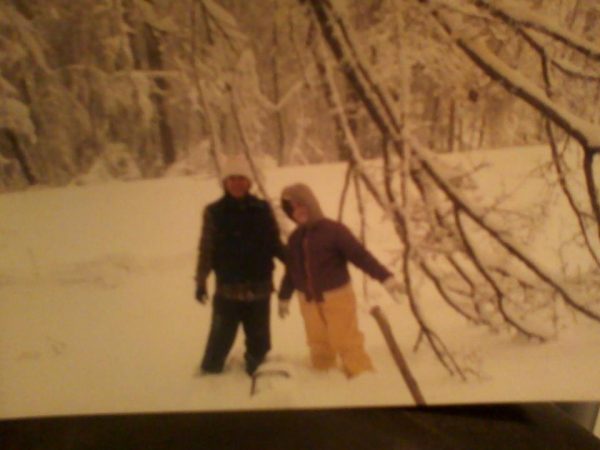
- “I was only 6 years old at the time of the blizzard. My family and I lived in Centre AL in my greatgrandmothers old farm house. … we didnt have power, and my parents boiled the water for us to have airplane baths (get the high spots or the wings and the tail.) Towards the end of the week I think my parents were going stir crazy so we bundled up in jackets clothes and more jackets to head out and see a family friend 3 miles away.I remember I could barely walk from all the layers. When we got close to the road I completely stepped straight in the ditch which was covered in complete snow and ice. Again I am a very small person and even a smaller six year old. So i couldnt get up and my family had to dig me out bascially. Needless to say my father carried me on his shoulders for three miles so we could get to the family friend. My dad was tired but carried me all the way back so I wouldn’t get ‘lost ‘ in the snow agiain. I enjoyed that time with my family even being so young. no cell phones, no internet no distractions. I look back at the blizzard of 93 as a great thing.” -Teigh
Some made “connections” without leaving home at all; nine months later the region experienced a mini baby-boom as a result of what naturally happens when you’re stuck home alone in the dark with nothing to do except love the one you’re with.
We made connections, made fires, and made it through, with minimal government assistance. We figured out how to prepare whatever food we had, and then shared it with those who didn’t have. BBQ grill fish sticks and woodstove hotdogs became gourmet cuisine, at least until everything in the fridge started to spoil.
- “We had the best food. The best soup I ever tasted. Cooked on top of a kerosene heater. Yummy. Had to cook all the meat on the grill so it didn’t go bad. We played cards and got to know everything about each other. Those were some of the best days of my life. Was a great time.” -April
- “I was seven at the time. I remember walking with my mom to some relatives to check on them, and bringing them to live with us for a while. I remember eating boiled hot dogs off our wood heater, and playing a lot of board games.” -Chase
Within a few days the snow was long gone, and after a few more the lights came back on. But some three decades later nearly everyone living in the region who lived through the Storm of Storms has vivid memories – both good and bad.
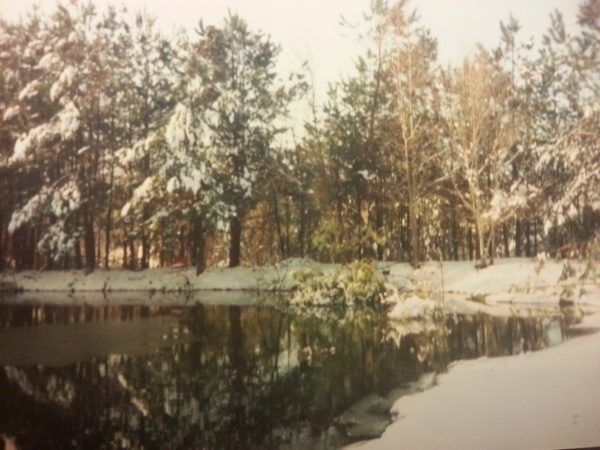
We learned to appreciate the grid a little more, to take the weather forecast more seriously (except when we don’t), and to prepare ahead for disasters with a little extra supply. Everyone age 35 and up has a story to tell, and gets to say “1993!” every single time snow comes into the conversation.
- “We were living in ringgold, out past the Picking barn. We were unaware of the storm coming in and having a slumber party with 4 extra children along with my 3. We woke up to snow above the door knobs, no heat and a house full of children. A lot of parents wanting their children. By the second day a couple parents tried the national guard, they would not help either. My Husband ended up walking them out almost 2 miles, their parents waiting. On the third day a heater and fuel arrived by way of a tractor. I was so grateful. We lost power for 8 days and Ive never let us be unprepared again.” -Kristi
Today governments are better prepared, communication methods have vastly improved – but do we still have the survival skills, the extra supplies, and the relationships that got us, and our parents or grandparents, through the Storm of the (last) Century?
How would we fare in 2023 under the same circumstances or something even worse?

